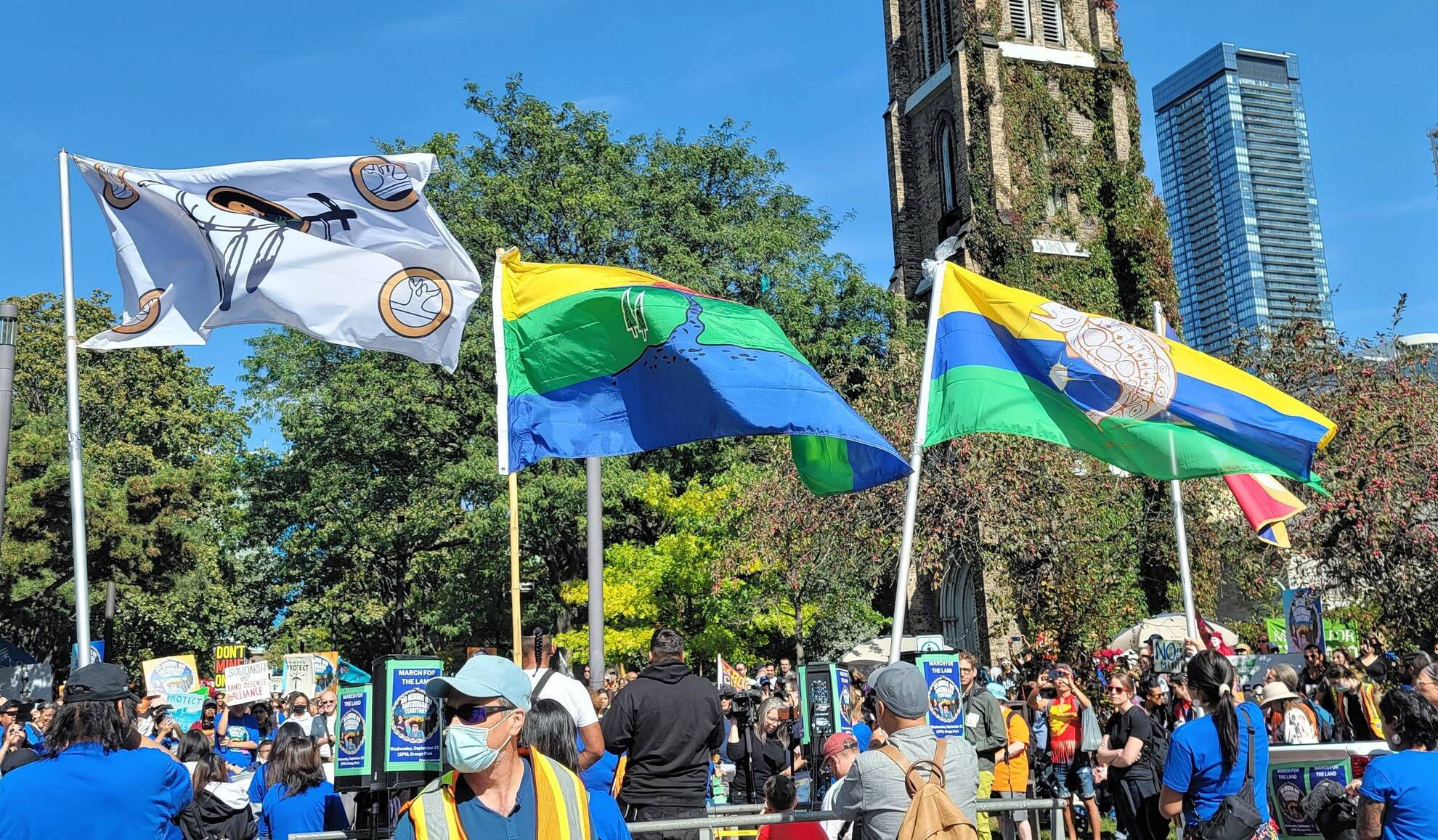On September 27th, five First Nations from Northern Ontario marched together demanding that Doug Ford stop the unwanted mining in their territories. The alliance of Asubpeeschoseewagong (Grassy Narrows), Kitchenuhmaykoosib Inninuwug (Big Trout Lake), Wapekeka, Muskrat Dam, and Neskantaga First Nations had all ages make the trip to Toronto.
An estimated 6,000 people marched with them. They aim to protect their lands, waters and traplines threatened by thousands of new mining bids since Premier Doug Ford's election.
Richelle Moonias, a high school student from Neskantaga First Nation, is a hunter who provides traditional food for elders. She tells North Star that despite travelling nearly 2000km to meet with Premier Ford, he did not show up to the scheduled meeting with the First Nation's Alliance. "We came here to tell him straight up in his face, no we won't sell our lands for money, because there's really no benefits for us, it's just for him."
Stanley Moonias, of Neskantaga First Nation explains "we stand together. We have common issues of our land, fishes, waters. I don't think government cares at all. It doesn't give a fuck. I've been listening to these negotiations since I was a little kid. We're still living in poverty. We don't get nothing from the mining. We're getting poorer, and who's richer? The government!"
The alliance is demanding an end to the Free Entry mining system that permits companies to buy land without obtaining consent from the Indigenous people residing there. In 2018, Ford's government introduced a policy allowing mining claims to be filed online for a small fee, with no notification to the local First Nations. With over 24,000 Indigenous residents in the area, the Ring of Fire mining projects currently encompass 7,000 mining claims, spanning over 3,600 km².

Stanley, a hunter, explains how his community depends on the land the miners purchased: "I live all year round with hunting. Its what we live off of, and the big open mining pits they want to put in, it would destroy all of that." Leighton Waswa, a young hunter from Neskantaga First Nation tells North Star his concerns "Our water is going to be polluted, we're worried there's going to be oil spills, the fish will get sick. The animals need the river too."
This area is the second largest wetland in the world. It is a massive carbon sink, storing 450 million tonnes of carbon that could otherwise increase CO2 levels in the atmosphere. According to Wildlands League researchers, exploiting just 4% of these wetlands would release enough carbon to offset the decrease in Canada's carbon emissions between 2005 and 2021.
The Grassy Narrows' struggle for self-determination dates back to the 1960s, when a paper mill polluted their water with mercury. This poisoning led to permanent health problems, a mental health crisis and youth suicide. Grassy Narrows is host to Canada's longest blockade in 200 years, started in 2002, and in 2018, 4,000 new mining projects are facing strong resistance on their territory.
"No means no and that is exactly what we're here to say." explains Kendra Moonias, a youth of Neskantaga First Nation. Stanley, for his part, tells North Star: "We have everything that we need back home. We want it to stay like that, with nothing destroyed—good land."


